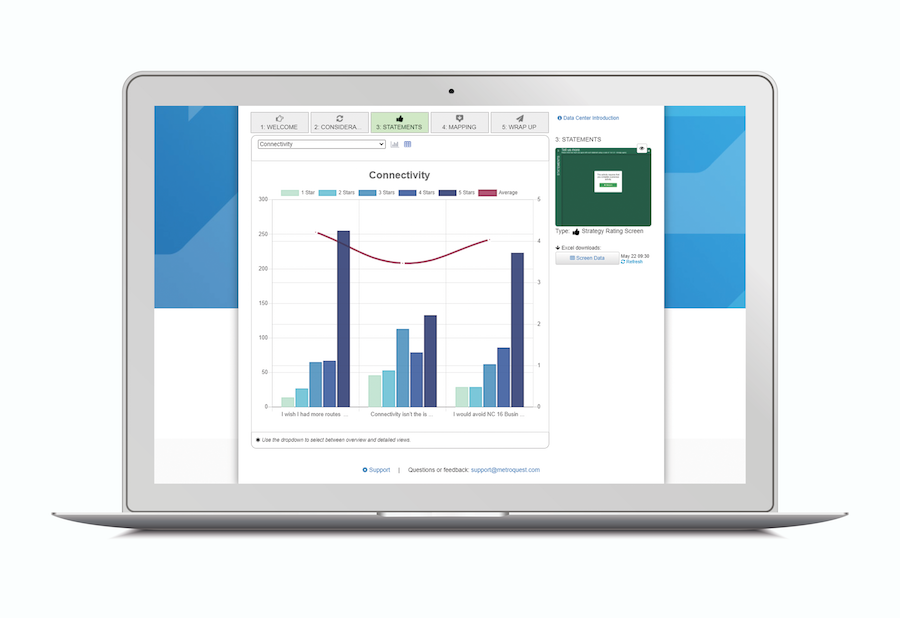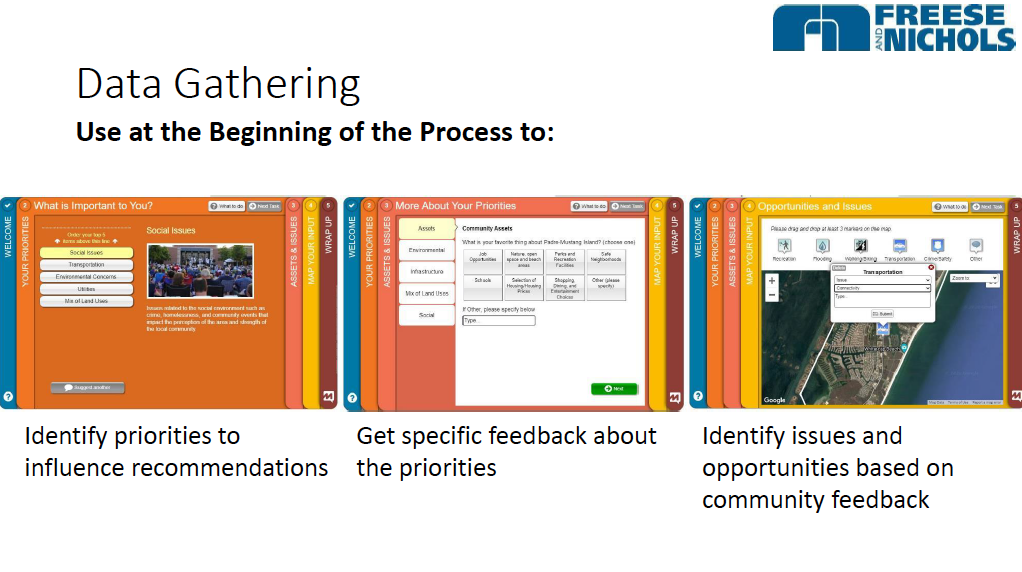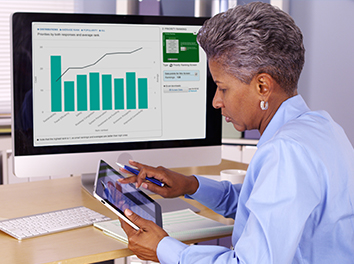Using Online Surveys for Data Collection During the Planning Process

As a result of declining participation at traditional public meetings and nationwide mandates that still prohibit nearly all face-to-face events, planners have turned to online tools to conduct their community engagement virtually. Fortunately, digital public engagement transcends the need to gather in person, enabling organizations to bridge the gap among stakeholders in the community and collect input from a very wide and diverse audience to support important plans.
Online surveys, in particular, have become a leading tool in the realm of digital engagement. Not only do they create a safe online experience for participants and educate the public about complex planning issues in a fun and engaging way, they also significantly enhance the data collection process: an integral component for achieving great community engagement.
Informed, unbiased and quantifiable public input gives planners the insight to develop plans that truly meet the needs of the community. Let’s explore why agencies and firms nationwide rely on online surveys to gather data for all types of planning projects!
Instantaneously Capture Accurate Data with Online Surveys
Planners use online surveys to quickly gather reliable public input. Immediately after a participant submits a survey response, it is processed and sent directly to an online database. Compared to traditional engagement strategies, public input gathered through an online survey is available a lot quicker as the data is inputted electronically, rather than manually.
The data collected in an online survey is also more accurate and reliable. Online surveys eliminate human error, making each participant’s response quantifiable and relevant. They also limit the impact that opinionated and outspoken individuals at in-person meetings may have on a participant’s choices and opinions. With an online survey, the community input experience is safe and private for participants, ensuring answers, suggestions and feedback for plans is a lot more informed and a lot less biased!
Using Surveys to Analyze Public Insight with Ease
The instantaneous survey responses also mean that the results are available in real-time, providing planners with accessible data that they can analyze at their convenience. With MetroQuest, for example, all participant responses are automatically inputted into the Data Center, which automatically creates clear and comprehensive graphics that help contextualize and visualize thousands of data points.
These colorful and clear visualizations simplify the gathered input to help planners analyze the data and build reports. The charts and graphs are also a great way to impress decision makers as well as the public. You can effortlessly show the community the data that was collected from the surveys and how their input was valued and used in the decision-making process, closing the feedback loop and helping to generate trust among the community.
Gather Demographic Data About Your Survey Participants
Planners also need a high level of public input across a broad demographic. Online surveys are a very accessible solution for capturing the demographic data from your participants. Depending on what’s important to your organization, survey questions can be tailored to gather specific data ranging from a participant’s age and gender to their ethnicity, income, location and so on.
MetroQuest’s Data Center presents this demographic data in the same, intuitive dashboards where the additional data is stored. This allows you to break down your survey results to determine whether you are reaching a broad and diverse demographic. This data also gives your organization more insight into where you can increase or target your efforts to reach specific groups and geographic areas, for instance.
Case Study: Using Online Surveys to Collect Data at Multiple Points of the Planning Process
In a recent webinar on the Essential Online Public Engagement Toolbox, community engagement experts from Freese and Nichols revealed why online surveys are a leading tool for capturing data at multiple points during the planning process.
The firm used a MetroQuest survey for a project with the City of Midlothian during the initial stages of planning to identify the public’s top priorities, receive specific feedback about preferences around the plan and uncover various issues and opportunities in the community. The survey gave the firm insightful data from a wide range of participants to influence recommendations for the project and, subsequently, develop a preliminary project proposal that reflected the community’s needs and top priorities.
After developing an initial plan, the firm used a follow-up survey to present a draft to the public and gather additional feedback and input about the prospective plan.
This additional MetroQuest survey allowed participants to assess whether they agreed with the proposed vision, prioritize various policy initiatives for the plan and rate a number of strategies and recommendations. Not only did this provide the public with the opportunity to validate the initial recommendations and help direct important policy decisions, it also gave the firm insightful data that revealed whether the public was in favor of the proposal. From here, they tailored the plan according to the community’s feedback.
The survey responses at two distinct points during the planning process translated into insightful, quantifiable data to help measure the public priorities, develop a plan that reflected the community’s needs and validate recommendations to the proposed plan. Compared to traditional outreach strategies or alternative digital engagement tools, the tailored MetroQuest surveys helped the firm uncover what truly matters to the community, provide the local government agency with data they could trust and, subsequently, the confidence to develop a well-informed plan that reflected the community it served.
This case study is a great example that demonstrates how agencies and firms can use online surveys throughout the planning process. To learn more about Freese and Nichols’ success with MetroQuest, you can check out our blog here or watch the on-demand webinar here.
Successful online engagement requires a strategy to engage the public and a method to collect data from participants. Planners can rely on online surveys to collect informed and data-driven input in real-time to understand what participants truly value in order to envision the future of their communities.
To learn more about how to collect data using an online survey, contact us today or check out our recent on-demand webinar.
Essential Online Public Engagement Toolbox for Planning
Safe, effective online engagement for your plans starts with the right toolkit. Let’s explore tools that build public support and trust!



